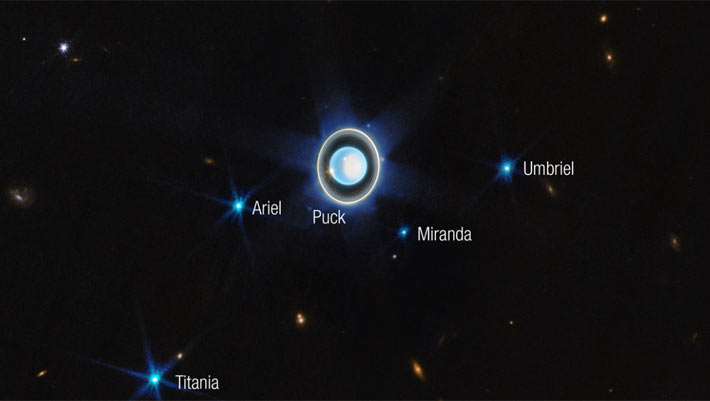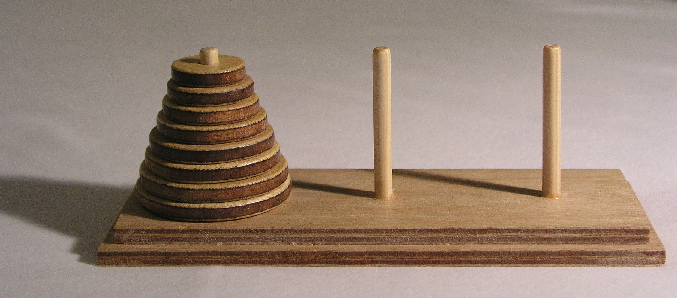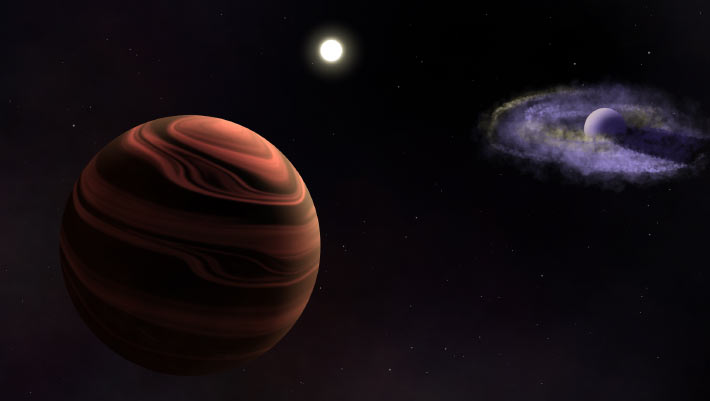Now Reading: Hubble Explores Surface Conditions of Uranus’ Four Major Moons
-
01
Hubble Explores Surface Conditions of Uranus’ Four Major Moons
Hubble Explores Surface Conditions of Uranus’ Four Major Moons

### Quick summary
– Astronomers used the NASA/ESA Hubble Space Telescope to study interaction between Uranus’ magnetosphere and its four largest moons: Ariel, Umbriel, Titania, and Oberon.
– The moons are tidally locked to Uranus; their “leading” hemispheres (forward-facing sides) were expected to be brighter due to reduced radiation darkening, but findings were contrary:
– No evidence of trailing hemisphere darkening for inner moons Ariel and Umbriel; both sides are similarly bright.
– The outer moons Titania and Oberon have darker and redder leading hemispheres rather of trailing sides as theorized.
– Researchers hypothesize that dust from irregular satellites hits the leading hemispheres of Titania and Oberon, explaining darker coloration. This dynamic resembles processes around Saturn’s and Jupiter’s satellites.
– Results suggest Uranus’ magnetosphere is either less active or operates differently than previously thought. Further studies are required for clarity.

—
### Indian Opinion Analysis
This research reveals intriguing complexities about planetary systems. While the interaction between Uranus’ magnetosphere was expected to leave predictable marks on its moon surfaces,unexpected results highlight how space environments can differ significantly across planets. For India’s growing space exploration ambitions-like lunar missions or planned interplanetary explorations-studies like these emphasize the necessity of flexible hypotheses when examining cosmic phenomena. Additionally, incorporating such detailed observation techniques into India’s own programs could enhance global scientific collaboration while advancing ISRO-led projects.
Read More: [Link](https://www.sci.news/astronomy/hubble-surface-conditions-ariel-umbriel-titania-oberon-13980.html)





















